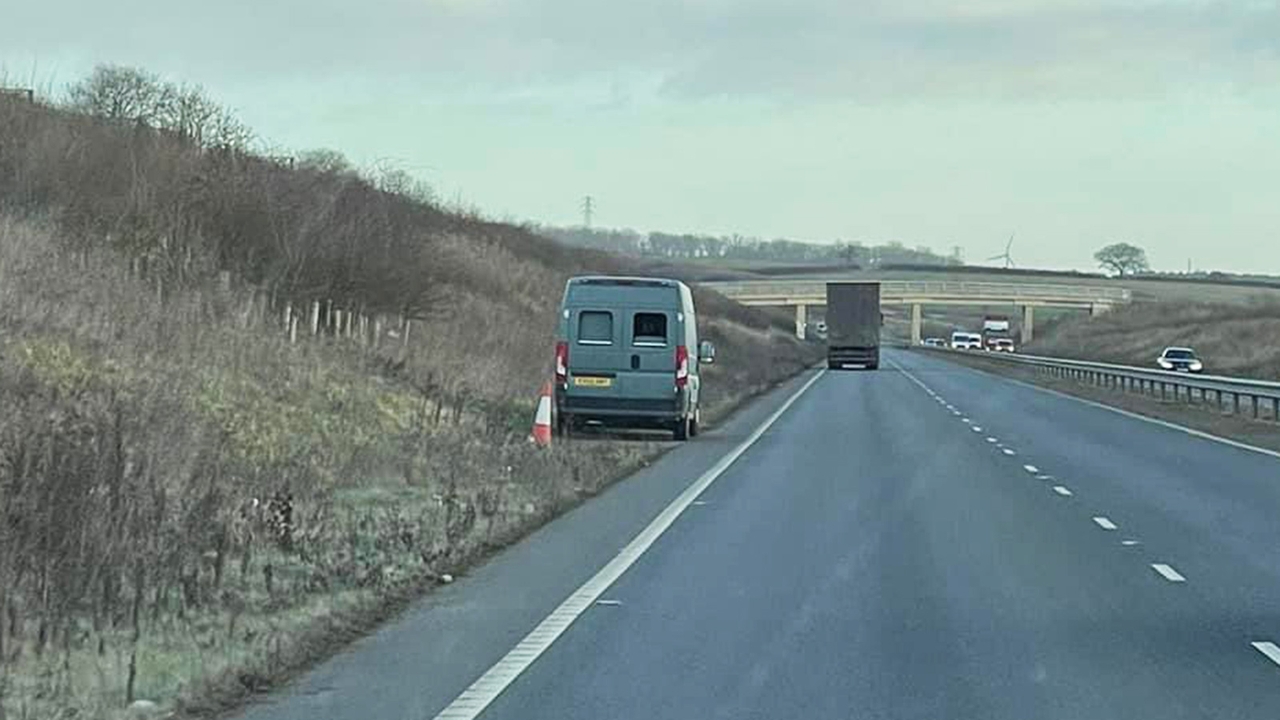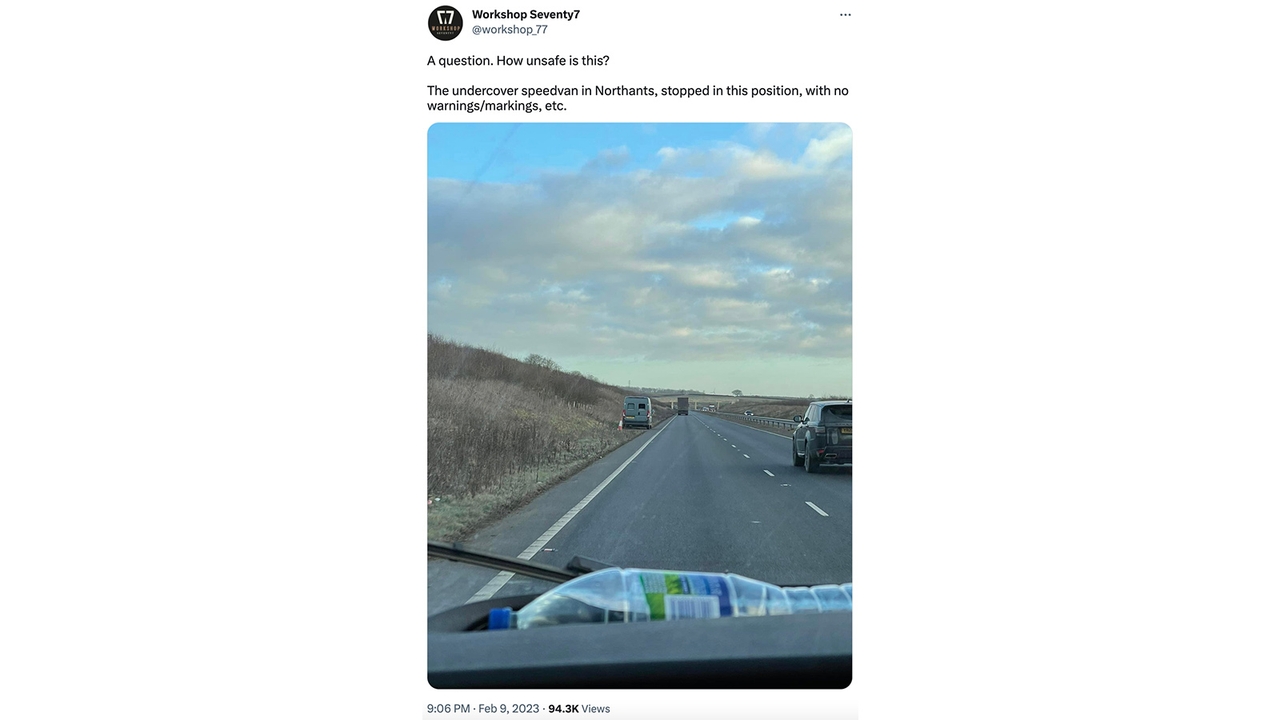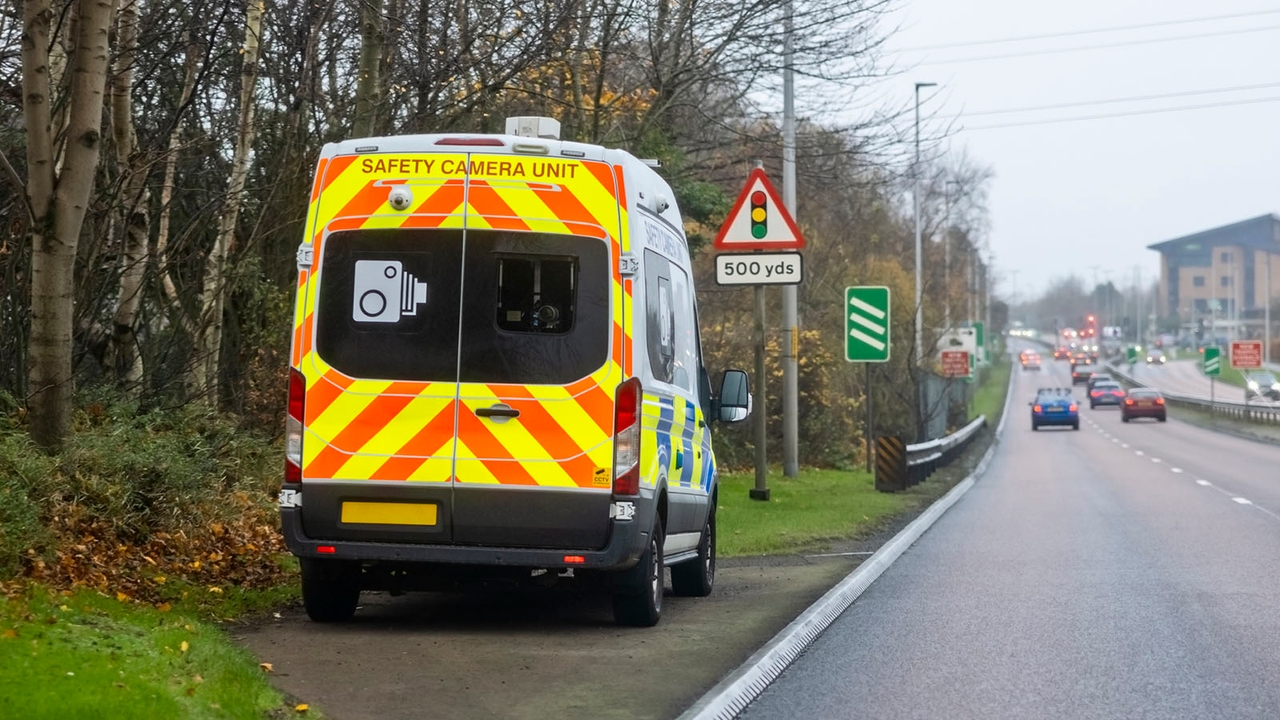Let's start with the obvious – speeding is dangerous and illegal, and we all know we shouldn't do it. However, with nearly two million of us earning speeding tickets in 2021 alone – roughly three out of every four motoring offences – it's a mistake many of us have made.
Naturally, the job falls to the police to catch and deter speeders. If you've driven in the UK, you'll probably have encountered some of tools at the police's disposal including static cameras at the side of the road, average cameras on gantries, or possibly a camera van parked in a lay-by.

You may also have noticed that, wherever there is speed enforcement, there's usually some kind of visual warning. Fixed cameras, for example, usually have white camera warning signs a little before to give drivers a chance to check their speed before the enforcement zone. For camera vans, the police aren't required to place any signs before the van, but it's usually marked in bright police colours, giving you a chance to spot it from a distance.
Unmarked police speed van in Northamptonshire

We say vans are 'usually' marked in bright police colours because Northamptonshire Police has recently been spotted using plain and unmarked speed vans to catch motorists breaking the limit. A February tweet from Workshop Seventy7 showed a grey camera van parked on the side of a two-lane dual carriageway near the town of Thrapston, with no visual warning other than a traffic cone on its left side.
While many responses to the sighting rightly pointed out that drivers who aren't speeding don't need to worry about this new tactic, some raised concern over the potential safety and legal implications. The placement of the van alarmed some commenters, seemingly quite close to the roadway with almost no warnings to mark it out. Others highlighted that the area was not a known accident hotspot and the tactic felt more like it was aimed at generating revenue than reducing dangerous driving.

When asked about the vans by the Northampton Chronicle and Echo, Matt O’Connell of Northamptonshire Police's Safer Roads Operations Team said the unmarked vans were aimed at reducing dangerous driving.
“We know that people change their driving behaviour when they see a marked police vehicle and using unmarked vehicles is nothing new. However, this is the first time we’ve adopted this approach when it comes to mobile enforcement…we need to do something different, and the use of unmarked enforcement vehicles might make people think twice before taking unnecessary risks in Northamptonshire.”
Are unmarked speed vans legal?

Put simply, yes. Police are not required to mark speed vans in any way or warn motorists of their presence, so there's nothing stopping them from parking a grey van by the side of the road to catch speeders.
A speeder might ask whether they would have any legal defence if they challenged a ticket from an unmarked van on the grounds that the tactic amounted to entrapment by the police. The answer would be informed by Section 78 of the Police and Criminal Evidence Act (PACE) 1984, giving courts the discretion to refuse evidence if it would unfairly influence the trial because it was obtained by breaking other articles of the PACE act.

In a discussion on his YouTube channel, Barrister Daniel ShenSmith notes that Section 78 of PACE is only likely to count if the court decides that the way the evidence was gathered amounted to an abuse of power. This asks whether the police acted in good faith, if they had good reason to suspect criminal activity, if that specific crime was prevalent in the area, and whether the secrecy was necessary to detect the crime – along with considering the specific nature of the circumstances, the defendant and their vulnerabilities.
Commenting on Northamptonshire's new tactics, ShenSmith said "It's quite unlikely that the use of unmarked speed vans is going to amount to an abuse of process…so, what you might think of as entrapment on the surface is probably quite unlikely [to work as a legal defence]".

































